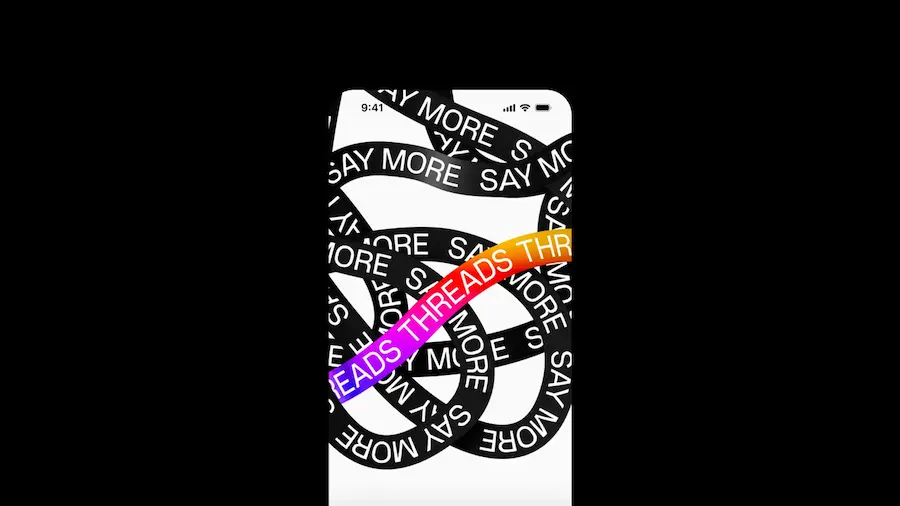Can you imagine a social network designed for sharing moments, ideas and debates in real time, but without losing the close, private feel we so often miss on classic platforms? That’s Threads, Meta’s bet (yes, the makers of Instagram and Facebook) to compete with X (Twitter) and move closer to Mastodon’s open philosophy, all with the magic of being directly connected to Instagram. Keep reading and discover why Threads is generating so much buzz in the tech community!
What is Threads and why should you try it?
Threads is a microblogging social network —yes, you heard right, in the pure style of X (Twitter)— designed to share short messages, images, videos, GIFs and even polls with your followers. The innovative part is that you don’t need to create an account from scratch: simply sign in with your Instagram profile and you’re ready to go. In fact, both accounts are linked to make switching between platforms easier, an integration as convenient as syncing Google Drive with your Gmail account.
But Threads goes beyond a simple tweet: it aims to be a more intimate and personal space, where you can decide whether everyone can see your content or only your closest friends. Also, the developers haven’t forgotten the interoperable future of social networks and are integrating (or plan to integrate soon) ActivityPub, the protocol that allows platforms like Mastodon to connect. That way, your posts could reach much further… and you could follow conversations from different apps!
How to get started on Threads: installation and first steps
The process to get started is as simple as downloading the app from the App Store or Google Play, or accessing it directly via the web at threads. If you already have Instagram, you just need to sign in; if not, you can browse public posts without creating a profile (although you won’t be able to interact).
The interface is intuitive: at the top you’ll find icons to access your main feed, searches, create new threads and notifications. You can switch between two timelines:
- For you: mixes content from accounts you follow with algorithm recommendations (similar to TikTok’s “For You”).
- Following: shows only posts from the accounts you follow.
Posting is very easy: tap the create thread icon, write your text (up to 500 characters), add images, videos or GIFs if you want, add hashtags… and publish! You can also share your threads directly to Instagram Stories to amplify their reach.

All the key features of Threads
Threads doesn’t fall short on functionality. Among its main options are:
- Multimedia posts: text (up to 500 characters), images, videos up to five minutes and GIFs thanks to the Giphy integration.
- Thread creation: link several messages to tell stories or extended discussions.
- Interactive polls: ask questions to your community and let them vote among several options.
- Hashtag system: add topic tags to discover and be discovered.
- Voice messages with automatic transcription: ideal if you prefer to express yourself by speaking.
- Multiple ways to interact: reply to posts, quote them adding your personal comment, share them or simply leave a “like”.
- Advanced search: find users by name or explore content using keywords. If you have Instagram linked, it also suggests contacts you already know.
- Sharing options: share posts outside Threads by copying links or taking them to other apps like WhatsApp or Messenger; you can also quickly add them to your Instagram stories or feed.
- Translation system: translate posts in other languages from the mobile app.
Thinking about privacy —a geek obsession on par with end-to-end encryption in Signal— Threads allows you to mute, restrict or block users; filter offensive words; control who can mention you or see your posts; and even hide counts of “likes” and reposts.
It’s not all about posting: privacy and security Meta-style
More and more users want to control their digital footprint. Threads makes it easy by allowing you to set your profile as public or private; review who can mention you; manage muted and blocked lists (shared with Instagram); filter offensive replies; and even decide whether your posts can be suggested in other apps in the Meta ecosystem like Facebook.
On the security side it includes features such as changing your password regularly, enabling two-factor authentication —essential nowadays— and checking from which devices you have signed in. You can also receive alerts for any suspicious login.
Don’t forget to periodically review your settings to make sure you’re only sharing what you really want to show. Doesn’t it remind you of that feeling when adjusting permissions on Android before installing a new app?
.


